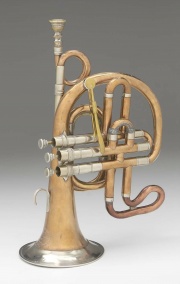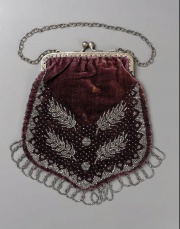German silver
Jump to navigation
Jump to search
Description
An old name for Nickel silver. Nickel silver is a silvery white alloy composed of Copper (52-80%), Zinc (10-35%), and Nickel (5-35%). Originally produced in China, nickel silver was first manufactured in Germany in 1770; the process was later perfected in 1823. It was used as an inexpensive, non-tarnishing substitute for Silver. Nickel silver was favored for use in ferrules of expensive artist brushes. Nickel silver is still used as a base for silver-plated items and is marked EPNS (electroplated nickel silver).
Synonyms and Related Terms
nickel silver; neusilver; newsilber; Neusilber (Deut.); prata alemã (Port.); white copper; albata; Paktong; Pakfong; Alpacca [Berndorf AG]
Resources and Citations
- F.B. Howard-White, Nickel: An Historical Review, New York: D. Van Nostrand Company, 1963.
- Thomas Gregory, The Condensed Chemical Dictionary, Reinhold Publishing, New York, 3rd ed., 1942
- David C. Scott, Metallography and Microstructure of Ancient and Historic Metals, The Getty Conservation Institute, Los Angeles, 1991
- Tom Rowland, Noel Riley, A-Z Guide to Cleaning, Conserving and Repairing Antiques, Constable and Co., Ltd., London, 1981
- Dictionary of Building Preservation, Ward Bucher, ed., John Wiley & Sons, Inc., New York City, 1996
- Thomas C. Jester (ed.), Twentieth-Century Building Materials, McGraw-Hill Companies, Washington DC, 1995
- Zora Sweet Pinney, 'A Handle on the Terms used for Artists' Brushes', unpublished glossary, 1999
- Wikipedia: German silver: 45-70% copper, 5-30% nickel, 8-45% zinc

